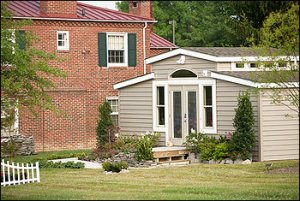In the general scheme of life, parents look after the children. But as parents age, the tables can turn. New technology is making it possible for adult children to closely monitor the daily movements and habits of their aging parents. The goal is to provide enough supervision to make it possible for elderly people to stay in their homes, which may be an emotionally and financially desirable alternative to moving to an assisted-living facility or nursing home.
Many of the systems are godsends for families. But, as with any parent-child relationship, loving intentions can be tempered by issues of control, role-reversal, guilt and a little deception. Just as the current population of adults in their 30s and 40s have a reputation of being hyper-involved, hovering parents to their own children, they now have the tools to micro-manage their aging parents.
You need to ask if this is something the parent wants. Monitoring technology for elderly people has been compared to the infamous “nanny cams,” hidden cameras some parents use to spy on their children’s babysitters. Needless to say, this can be very offensive to some.
Two recent articles, one from The New York Times and one from The Washington Post, explore some of the options available to families with aging relatives.
One choice is a GrandCare system, produced by a company of the same name based in West Bend, Wisconsin. It allows families to place movement sensors throughout a house. Information such as when doors are opened, what time a person gets into and out of bed, whether there’s been any movement in a room for a certain time period is sent out via e-mail, text message or voice mail. Costs vary depending on the features chosen, but this version costs about $8,000 to install plus monthly fees of about $75. That’s comparable to the cost of two months at an assisted-living facility.
Another monitoring alternative is a medication management system called MedMinder. It is basically a computerized pillbox. The parent’s correct daily dosages of different medications are arranged in boxes (usually by a nurse or other care provider). When it is time to take them, the pillbox beeps and flashes. If they are taken, you get a phone call or e-mail saying, essentially, Mom (or Dad) took her pills. If the pills aren’t taken within a two-hour window, the system starts nagging. It calls her. It flashes and beeps. Then you get a phone call with a message saying your mother missed her dose.
A small Virginia firm has unveiled a prototype of a portable, high-tech dwelling that would provide temporary shelter for a sick or elderly relative in the family’s back yard. It was created as an alternative to nursing homes as 78 million baby boomers head toward retirement. The company envisions that families could purchase or lease a MedCottage and set it up on their property, hooking it up to their home’s electrical and water supplies like an RV.
The N2Care MedCottage is a 12-by-24-foot prototype filled with biometric technology that would allow a family and health-care providers to monitor the condition of an aging or disabled relative. The cottage contains air-filtration systems, video links, devices that allow the remote monitoring of vital signs and sensors that could detect an occupant’s fall.
Local zoning laws may pose one of the biggest obstacles to making such dwellings a practical solution to caring for aging family members in what it calls “accessory dwelling units.” Detractors have dubbed the concept the “granny pod” and predicted that it could create conflicts between neighbors who find the dwellings unsightly.
The MedCottage has some of the features AARP advocates in accessory dwelling units, but not all of the features that could be useful for people of all ages. It’s a step in the right direction. Other companies seeking to make similar structures are Seattle-based FabCab (whose name comes from Fabulous Cabin), and San Francisco-based Larson Shores Architects, which designs what it calls Architectural Solutions for the Aging Population, or ASAP.
Several studies have been undertaken to see just where the line between loving watchfulness and over-intrusion might be drawn. People don’t want to feel their privacy is compromised, and they tend to draw the line at cameras. The key seems to be control. The older person is much more amenable if he or she can control what information is available and who can access it. Ultimately, the decision must be made by the aging parent.
